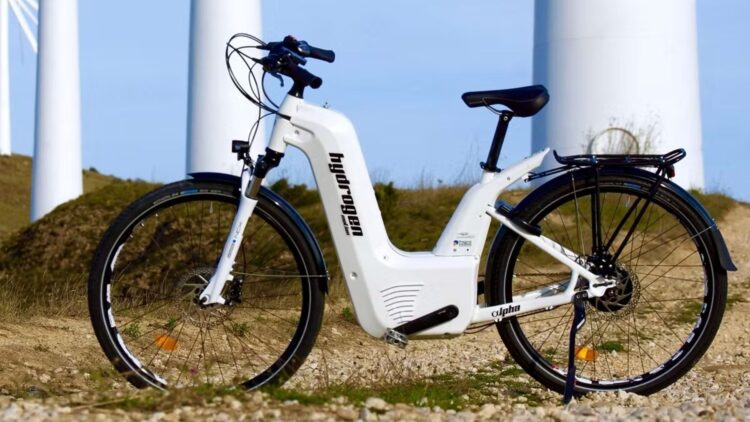Electric vehicles have been making a mark for years, but with many cities getting on board with clean energy solutions, one of the main ways they have chosen to do so is to encourage their citizens to use their bikes. And since cities tend to be big, electric bikes have made a splash over the past fifteen or so years. But now the time of electric superiority seems to be coming to an end, and not just in the car world, but also in the bike world. A new kind of bicycle has emerged and is aiming to flip the switch on how we think about eco-friendly two-wheelers with its hydrogen engine.
Created by the Irish startup HubUR, this new form of transportation is mirroring what is happening with cars in the two wheel world and is attempting to use a new and improved form of fuel to make mobility easier.
The problem with electric bikes that HubUR are attempting to fic with hydrogen
Electric anything has been a good solution for years, as it is a cleaner way to move through the world, at least at first glance. But that is not entirely true, as charging takes time, and most of the most efficient batteries rely on lithium, which has it own environmental impact issues to consider. This has made a lot of industries start to move away from purely electric focus and look for alternatives. The largest industry that has done this is the automotive industry, but the aerospace industry is not far behind and now the e-bike crowd is catching up.
To improve on the traditional design, instead of lithium batteries, the Boon H2 uses a hydrogen fuel cell system which runs on a tiny, removable cartridge that holds just 20 grams of hydrogen under low pressure. That little tank is enough to power short daily rides, and since hydrogen is very stable, if you feel like it is not enough you could always bring a spare tank.
But since one of the main issues is charging, and e-bikes can be comfortably charged at home, to make the transition feasible HubUR needed to give their customers the same ease, and they do. You do not need to charge your tanks at a hydrogen refueling station, the new bicycle comes with its own home electrolyzer, so all you need is some water and electricity and you can make your own hydrogen at home. The concept is very safe and easy to use, and it does not cost a lot of money unlike your electric bill.
And the effort is worth it, one cartridge gives about 50 km of range, and with two in use, you are looking at about 500Wh worth of power, which is more than enough not just for a daily commute in most cities, but also for day trips that you might want to take to explore outside your area. Another big plus is the way the hydrogen system works compared to traditional batteries, as these cartridges can be cleaned, refilled, and swapped out in no time, making using your bike an almost effortless choice.
This kind of setup makes it perfect for everyday users, as well as tourists who want to cover more ground , and now that e-bikes are facing new restrictions in some places (many city buses will not allow them and in some cases they are not allowed in the subway or the train either), this alternative fuel source could not come at a better time.
But none of this is relevant if the bike does not meet expectations. Weighing in at 25 kg and riding on 26-inch wheels, it comes with familiar features like a Shimano Tourney derailleur and an LCD display to keep things user-friendly, and despite the cutting-edge fuel system, it still gives off that traditional cycling vibe.
The price may be the bone of contention, as it is priced at€6,000 (around $6,500), but considering that it can generate its own hydrogen and does not rely on the power grid or public hydrogen stations, if you are an avid rider it is at least worth a thought.

